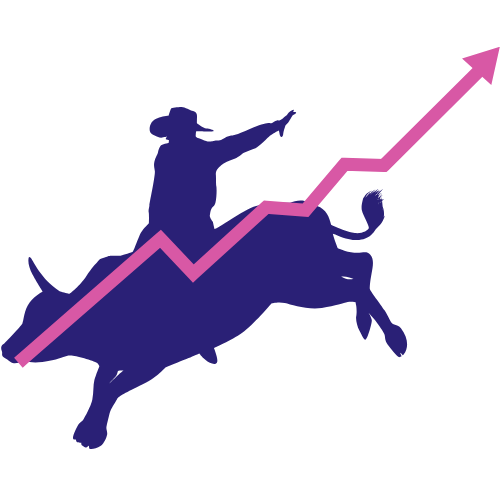Forex mini accounts offer the best option for smaller retail traders who wish to enter the FX and CFD market with a nominal amount of trading capital. However, unlike micro accounts, mini Forex trading does not allow very small position sizes but does allow traders to trade well below the requirements of standard lot trading.
In this detailed guide, we will provide you with a comprehensive rundown on what is mini account in Forex, the best Forex brokers for mini account, and how to open a mini Forex account with the absolute minimum capital requirement. The Forex mini account brokers we recommend are some of the top brokerages in the market and should provide you with the best mini Forex lot trading conditions in the entire market.
[accounts_table title=”Best Forex Brokers for Mini Account” title_id=”forex-mini-account-brokers”]
What Is Mini Account in Forex and How Does It Allow Trading with Small Lots?
[content_image src=”/forex-trading.jpg” alt=”Forex trading” classes=”img-fluid float-sm-left mr-sm-3 mx-auto d-block my-3 img-shadow “]
Conventional FX market transaction orders are done in increments of a standard lot, which equates to 100,000 units of a base currency. A standard lot is merely the number of units of the quote currency bid/asked for 100,000 units of the base currency. For instance, if the current exchange rate of the GBP/USD pair is 1.20, then one standard lot means traders will have to pay 100,000 GBP for 120,000 USD.
Despite the changes in currency exchange rates and volatility, one standard lot remains the same at 100,000 units of the base currency. When considering the implications of a standard lot on a regular retail trader, it is quite evident that they have to cough up 100,000 units of the base currency to open a single standard lot at market price.
Then again, one might argue that leverage can considerably bring down the capital requirement of a standard lot, but it also increases the risk. Nominal leverage of 1:50 usually allows traders to open a standard lot order with just 2000 units of the base currency. Still, if the market moves 200 pips (just a virtual scenario, since the actual number of pips depends on the currency pair and the account’s base currency), the trader will lose their entire investment. Therefore, leverage may not be the answer here.
Nevertheless, there is an underlying market demand among traders with a modest amount of trading capital that is not as significant as institutional traders but not as low as micro-lot traders.
Therefore, in order to cater to this exclusive group of traders, brokers have introduced a concept known as a Forex mini account. Forex mini account brokers may also offer a Forex micro account, a concept we have covered in a separate article. For this article, we will stick to mini Forex trading, which involves trading FX in mini-lots.
One mini-lot is equal to 10,000 units of the base currency, which is 1/10th of a standard lot. Therefore, even with a 1:1 leverage, regular retail traders can start trading with just 10,000 units of the base currency, which is quite manageable for an intermediate trader or investor. If we bring leverage into the equation, the minimum margin requirements may fall further. Still, we don’t recommend using high leverage to open large positions with small capital to target insane profits.
However, unlike a micro-lot, which is just 1,000 units of the base currency, the margin requirement for a Forex mini account may still be on the higher side, which should be considered while trading the volatile FX markets. In the next section of this ‘what is mini account in Forex’ guide, we will briefly compare the micro, standard, and mini Forex trading accounts.
A Brief Comparison of Standard, Micro and Forex Mini Accounts
| Standard Account | Micro Account | Mini Forex Account |
|---|---|---|
| One standard lot equates to 100,000 units of the base currency. | One micro-lot equates to 1000 units of the base currency. | One mini Forex lot is equal to 10,000 units of the base currency. |
| Trading is reserved for high-volume traders, where the initial capital requirement is huge. | Trading is facilitated for small traders, where the initial capital requirement is very low. | More oriented toward intermediate traders. |
| Provides comparatively lower leverage and has higher minimum margin requirements. | Usually has the highest leverage with the lowest minimum margin requirements. | Usually offered with high leverage and moderate to low minimum margin requirements. |
| Cost of trading, such as spreads and commissions, is usually the lowest, along with other trading benefits. | Cost of trading is typically higher, if not the highest, due to micro trading conditions. | Cost of trading remains somewhere in between standard and micro accounts. |
| Lot size starts at 0.01 standard lot. | Lot size starts at 0.01 or 0.1 micro-lot. | Lot size starts at 0.1 mini-lot. |
| Brokers usually provide access to ECN/STP conditions. | Micro accounts are usually market maker accounts with automated dealing desks. | The best Forex brokers for mini account offer ECN/STP or hybrid protocols. |
Advantages of Mini Accounts for Retail Traders
Forex mini accounts are primarily geared toward beginner-to-intermediate retail traders who wish to trade the markets with a modest amount of trading capital. Of course, there are no hard and fast rules about who should trade with such an account, but if you want to invest anywhere from $500 to $5000, then the mini Forex trading account may make sense. Nevertheless, here are some of the advantages that you get to enjoy when you open a mini Forex account:
- The minimum investment required to open a mini Forex account is usually low, anywhere from $100 to $5000. As a result, you can start trading with a small risk and increase your exposure when you gain more confidence in your trading capabilities.
- You can trade in increments of 0.1 mini-lot sizes. Therefore, if you use proper money management and high leverage, you can manage large positions in the FX market. Placing larger orders and making the right trade calls can increase profits.
- Although live trading is risky, the perception of risk and the actual loss in dollar amount is smaller with a mini Forex account, especially when compared to a standard account. However, such an account is still riskier than a micro account.
- The best Forex brokers for a mini account usually allow all trading strategies, including hedging and scalping. Therefore, these accounts are highly suitable for short-term intraday and high-frequency traders.
- Forex mini accounts are also highly useful for strategy testing, automated trading, and general market evaluation. Several traders are also known to open a mini Forex account for intraday trading and a standard account for swing trading.
Avoiding the Downsides of Mini-Lot Trading
While there are several distinct advantages of trading with mini-lots, there are indeed several drawbacks that even the best Forex brokers for mini accounts may not be able to rectify:
- Since brokers offer higher leverage, the risk of loss is more magnified in a mini account than in a standard account. One mini-lot is 10,000 units of the base currency, which is only 1/10th of a standard lot. Therefore, with high leverage, the real-time losses can be quite substantial.
- These accounts are not as flexible as micro accounts or as diverse as standard accounts. Therefore, without proper money management skills and a sound trading strategy, it may not be easy to earn substantial profits without risking massive drawdowns.
- Some Forex mini account brokers restrict certain trading strategies and the trade duration, which may be counterintuitive to the idea of unhindered access to the best trading conditions.
- The cost of trading with these accounts may be higher since the broker facilitates a new service that deviates from the standard norms. Therefore, you should expect higher spreads, but some of the best brokers for a mini account do provide access to ECN/STP services to allow trading with competitive conditions.
How to Open a Mini Forex Account
[content_image src=”/opening-fx-account.jpg” alt=”Opening a Forex Account” classes=”img-fluid float-sm-right ml-sm-3 mx-auto d-block my-3 img-shadow “]
We have listed some of the best Forex mini account brokers in the table above, and we will continue to add to this list quite frequently to offer our readers a diverse range of broker options. Therefore, you should be able to open an account at any of our recommended brokers, and you will get some of the best trading conditions in the entire market.
To register for an account at any one of your preferred brokers, click on the signup link or download their mobile app on your smartphone or tablet to register through the app. You will be asked to furnish your personal information, contact details, identifying documents, and particulars about your experience in FX and CFD trading. Once you have submitted all the information and the broker has verified your information, you are good to open an account, deposit funds, and start trading.
[faq title=”FAQ” title_id=”faq” questions=”How Do You Modify Leverage for Mini Forex Accounts?;Is There Any Other Form of Mini-Lot Accounts?;Do All FX and CFD Instruments Come Under Mini-lot Trading?;What Would Be the Minimum Deposit Requirement for Mini-Lot Accounts?;Is Mini Forex Trading Suitable for Beginner Traders?” answers=”Most brokers allow their traders to modify the leverage through their user dashboard or through their proprietary trade platform. However, if the broker only supports a third-party interface such as MetaTrader or cTrader, then the only option to change the leverage would be through the user dashboard. You can calculate position sizes, margin requirements, leverages, and other trade-related parameters through the broker’s website or via free tools that are available online.;No, broadly, there are only three categories: standard, mini, and micro. However, a few brokers may offer a nano account, which has a minimum lot size of just 100 units of the base currency, but this is not as popular or common as the main three categories. Sometimes, these mini-lot accounts may be called a cent account, but this term is also used interchangeably with micro-lot accounts.;The actual number of tradeable instruments and their trade specifications can vary from broker to broker. While Forex mini account brokers support mini-lot trading for most FX and CFD instruments, there can be exceptions. Therefore, you have to choose your preferred broker by evaluating their liquidity conditions, order execution policies, supported lot sizes, and supported instruments. Our detailed broker reviews provide in-depth information such as markets on offer, costs of trading, leverage, margin requirements, liquidity conditions, and order execution policies so that you can choose the best broker to satisfy your requirements.;Most brokers offer such an account for as little as a $50 initial deposit, but it all depends on the inherent services of the broker. For instance, if the broker offers ECN/STP trading, then the minimum deposit requirement may be higher. Market makers, on the other hand, may only ask for a minimum investment of $5. Hence, you can realistically expect the minimum deposit requirement of most mainstream brokers to be around $50 to $1000.;Forex mini accounts allow traders to enter the market with a small amount of capital, which makes it a good choice for beginner traders. However, one must be mindful of the high leverage, volatility, and overall market risks. A micro account offers even better conditions, but if you plan on transitioning to a standard account, you can start trading with mini-lot conditions.”]



